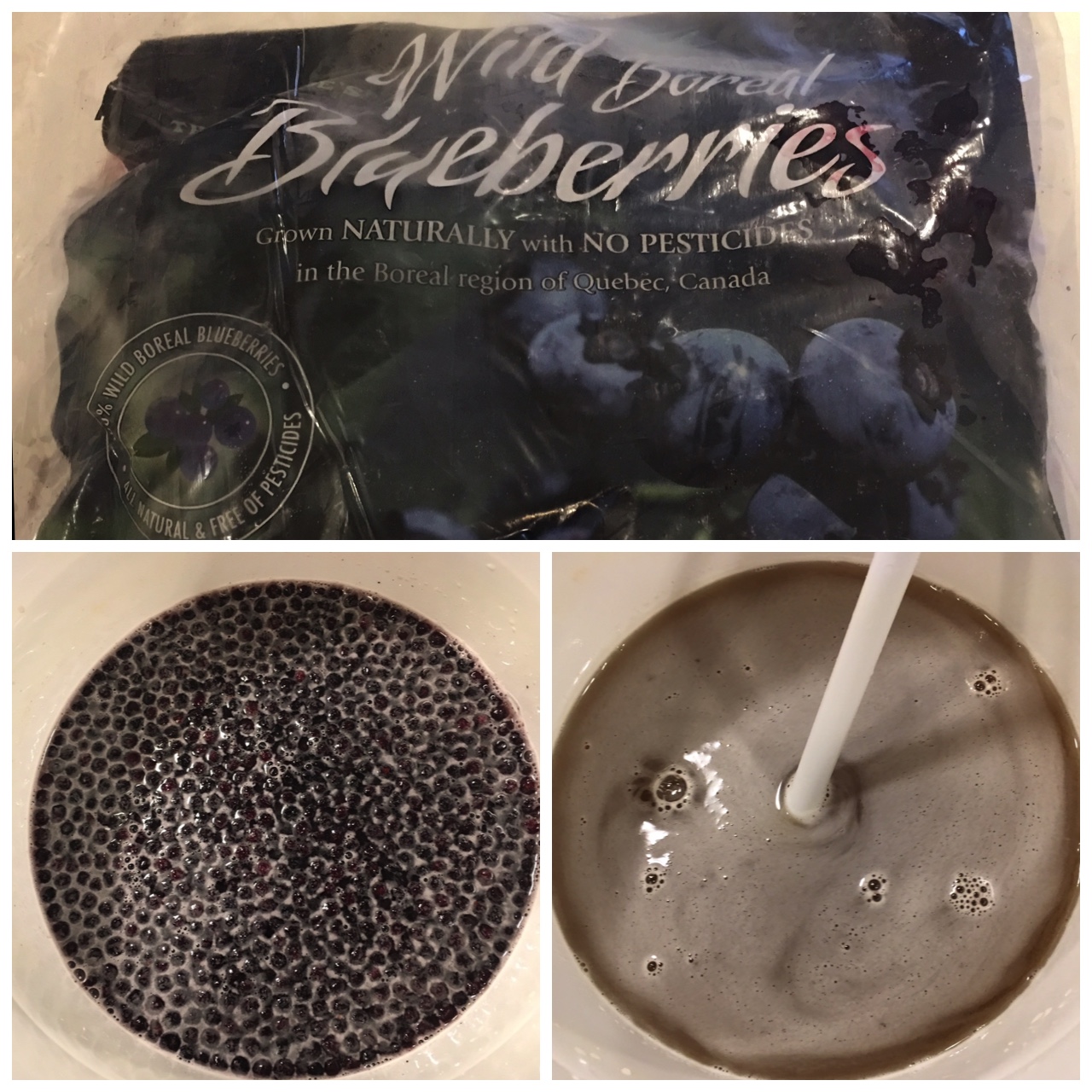
So are you saying to yourself “what, pray tell, is a melomel”? Melomel is mead (a type of wine made from honey) plus fruit – and, more specifically, blueberry mead is a “bilbemel”. We’re big mead fans: Sky River Meadery (https://skyrivermead.com/) in Washington state produces some exceptionally fine mead that tastes like bright, fresh honey – with a delicious fruity note, similar to the fragrance of a juicy concord grape – in a glass. It’s crisp, slightly sweet, and it captures the essence of perfect summer days and industrious bees collecting wild pollen. In short, it’s spectacular. We have yet to find a comparable mead available locally, so we’re taking mead-making into our own hands.Similar to other types of wine, mead can be made with yeast, but we’re following a recipe that uses wild yeast from the raw honey itself as well as from added fruit. Using specially-produced, known, strains of yeast like packaged wine yeast tends to result in a more consistent finished product; with wild ferments, you can sometimes get “funky” microbes in the mix that may produce undesirable flavors OR stunningly good flavors (like the Brett of the beer brewing world). I am, however, willing to throw caution to the wind – let’s see what happens!

The process is simple: stir the honey into the dechlorinated water until it’s well-mixed. Add fruit. Stir vigorously a couple of times a day. After a week, the fruit is strained out. Once the bubbling slows, the mixture is moved to a secondary fermentor with airlock. About a month later (when fermentation stops), it can be bottled. This melomel may be drunk young – in fact, it may be drunk after the initial fermentation period, so it could be ready in as little as two weeks. If you choose to drink it at this point, though, it will be sweeter and contain less alcohol than if you let it do a secondary fermentation.
So far, the melomel is a beautiful purple hue and when stirred, the intoxicating perfume of honey and blueberry wafts out. Why blueberry as the fruit choice? Blueberry seems to reliably lend a fruity (but not cloying) flavor that enhances the wines we’ve made; other fruit, like peaches, strawberries, blackberries, plums, or a mixture of fruit and berries would likely work well, too.
This recipe is very flexible and definitely lends itself to flavor creativity. Find it here: https://brooklynalewife.wordpress.com/2012/10/09/honey-ferments-jun-and-mead/.
Have you made wild-fermented melomel or mead? Tell us about it in the comments!
